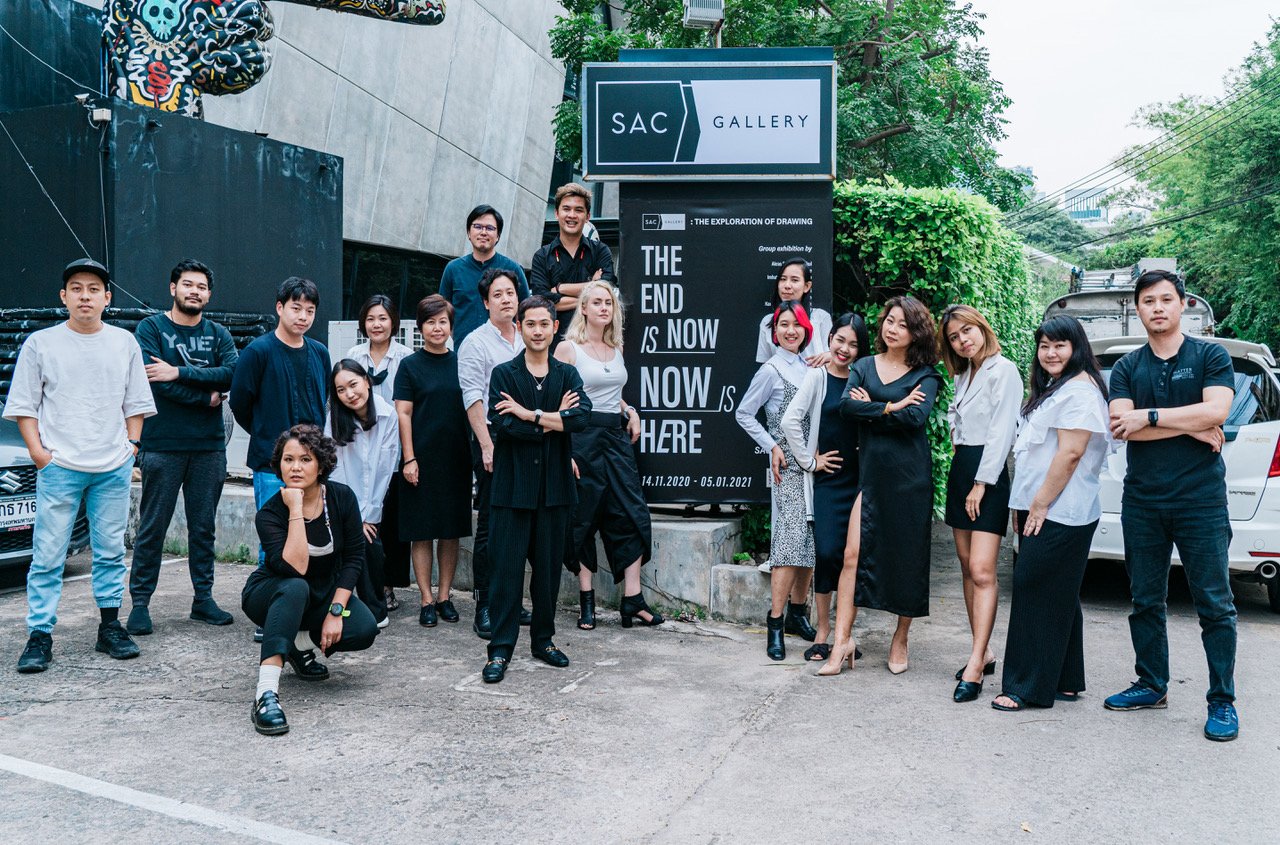Elsa Åkesson in Conversation with Collector, Jongsuwat Angsuvarnsiri
Sotheby’s Institute of Art alumni Jongsuwat Angsuvarnsiri is an art collector and philanthropist who founded SAC Gallery art space in Bangkok in 2012. The space measures more than one thousand square meters over four floors and its primary aim is to support and develop the careers of local artists.
MADE IN BED’S Editor-In-Chief, Elsa Åkesson speaks to Jongsuwat about how his interest in art collecting started, the creation of SAC Gallery and the local art market in Thailand.
Jongsuwat Angsuvarnsiri.
Elsa Åkesson: Jongsuwat, thank you very much for being with us today. My first question to you is, how did your interest in art come about?
Jongsuwat Angsuvarnsiri: I undertook a master's degree in marketing and advertising before completing my second master’s in art business at Sotheby’s Institute. In between both masters, I worked for a year in my father’s art gallery in Thailand, so the interest has really always been there. I started taking it more seriously though after working in my father’s gallery for a year and during my second masters at Sotheby’s.
EÅ: When did you first start buying art? What was the first artwork you bought?
JA: I started by collecting local Thai artists in 2014. I bought my first work from an artist I was working with during my time at my father’s gallery. I bought the piece with the salary I made, and I still have it with me today. We also collect as a family. My father is an art collector that focuses more on antiquities and furniture pieces, however, he now also collects contemporary art.
EÅ: SAC Gallery was founded in 2012 by your father. How has the art market in Thailand evolved since then?
JA: When we started almost 10 years ago now, we could feel a division between art collectors and what they liked. Local collectors would buy art that had historical significance to Thailand, whilst our local contemporary art was bought by foreigners.
Today, 10 years later, we are starting to see younger art collectors entering the market, and the percentage between foreign collectors and local collectors has now slightly shifted. I would say there are now more local collectors than foreign collectors collecting art from Thailand.
SAC Gallery.
EÅ: What was the inspiration behind opening SAC Gallery in 2012?
JA: Back in 2012, the aim was to open a space that would act as a supportive platform for emerging artists. We wanted to create opportunities for the local artists—a space welcoming all, disregarding the type of artistic education they may have undergone or their exhibition history. Our aim was to help launch their professional careers as a not-for-profit.
Today, SAC stands as a commercial gallery. On the side, we work on other projects such as SAC Residency, which acts as a foundation, and SAC Conservation, which offers advisory services on conservation as well as conserves and preserves works. We also have SAC Academy, where we organise events such as talks and offer art education courses such as curatorial programs.
EÅ: What are some of the future projects for SAC Gallery?
JA: The next venture for SAC is building a museum, which will be held under a different name. It is actually not part of the SAC program, it is part of the family initiative.
We are building a contemporary art museum in Chiang Mai, the north of Thailand. We worked with the architect Markus Dochantschi of MDA Studio, New York for this project, who used to be Director at Zaha Hadid’s architectural studio. We also worked with the branding consultant of the Tate and the V&A in London. We are hoping to really create a destination for art in the region. If everything goes accordingly, we are looking to open by Winter 2023. At the moment we are in the process of finalising a few design details.
SAC Gallery.
EÅ: How do you decide on the artists to showcase in the gallery?
JA: At SAC we have in-house curators that help identify artists and also help to make sure they are aligned with the vision of SAC. We try to look for artists that have something different, ones that can connect with global audiences.
EÅ: Could you tell us some of the challenges you faced when you rebranded the gallery?
JA: One of the challenges we still face today is that people continue to see us as an art centre. We therefore try to market the new brand as much as we can, letting people know we are now a commercial gallery, meaning the works we exhibit are for sale. However, this by all means does not indicate we do not welcome visitors anymore. We very much welcome visitors to come and have a look at our artists’ works. Having said this, we do receive email enquiries for ticket sales, or visitors who walk in to visit and contact the artist studios directly because they were not aware the works were on sale. It is an ongoing process for our new brand positioning and awareness.
SAC Gallery.
EÅ: What would be your advice to young art enthusiasts looking to open an art space similar to yours?
JA: My advice would be to firstly understand how the business model works. I also recommend to have a business model you know you can sustain. Your passion can only take you so far, so you need to have a strong strategic plan to support it. I also recommend to always be open to collaboration. It can help you grow faster, especially as a new endeavour.
Thank you very much, Jongsuwat!
Images courtesy of Jongsuwat Angsuvarnsiri.
Please visit Jongsuwat”s Instagram or LinkedIn to learn more about his work.
Elsa Åkesson,
Editor-In-Chief, MADE IN BED





